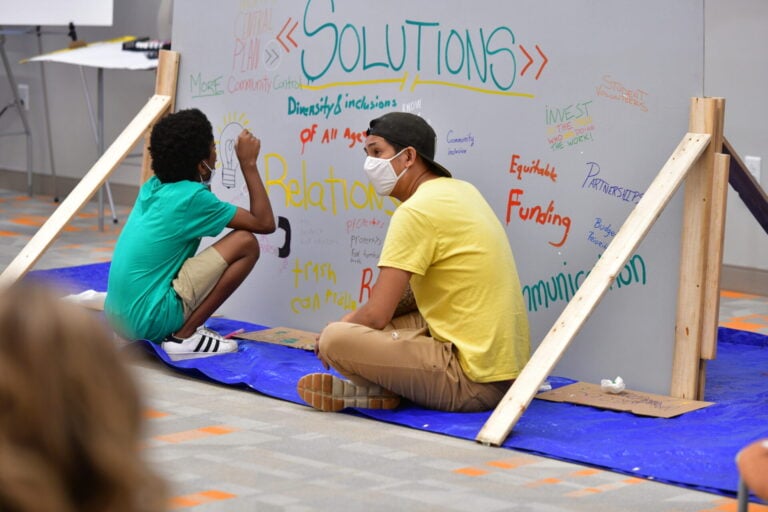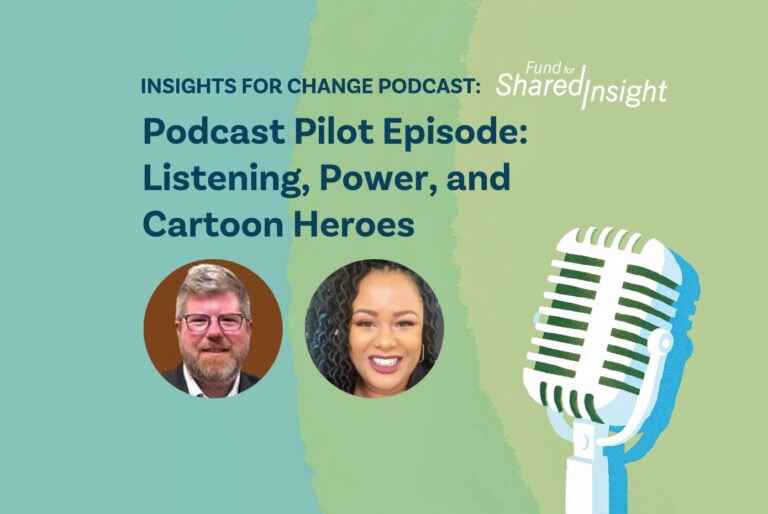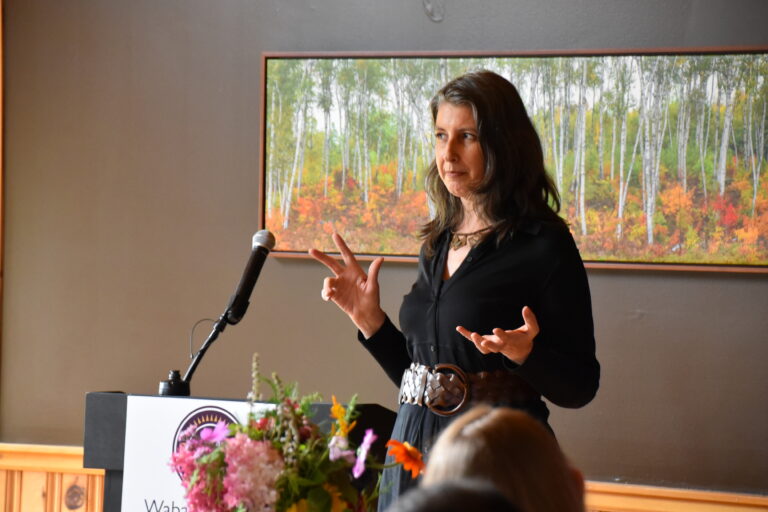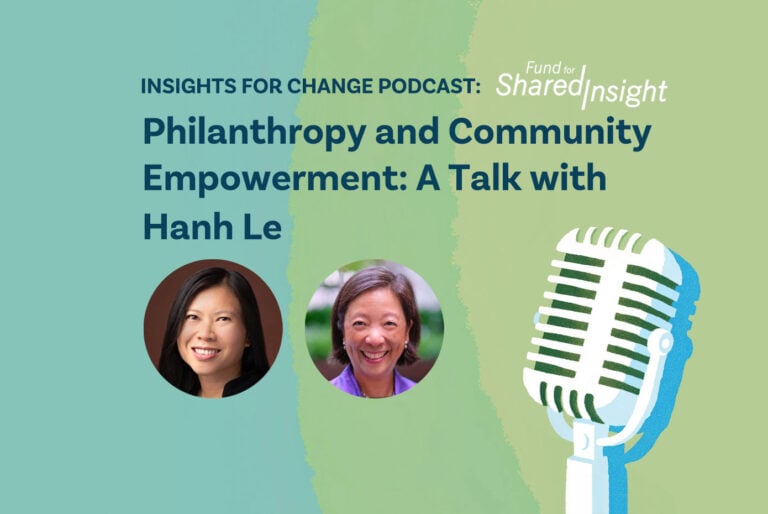Stepping down after nearly a decade in corporate giving, John Brothers reflects on philanthropy’s power dynamics and letting “community lead because they should lead.” A transplant to Baltimore where he was president of the financial company T. Rowe Price’s two philanthropic arms, Brothers calls the city “the best place in the world to change the world,” and uses a football analogy to describe a foundation’s role in blocking and tackling for the communities it serves.
What was your personal and professional background before philanthropy?
I grew up in poverty. The first phase of my career was that I worked directly in communities as a community organizer, case manager, after school coordinator, and eventually executive director of nonprofits. The second phase was as a “pracademic” — someone who brings together scholarship and practice. I was a researcher and academic who taught at NYU and Rutgers and also had a consulting firm that served more than 650 organizations around the globe. Philanthropy has been the third phase of my career.
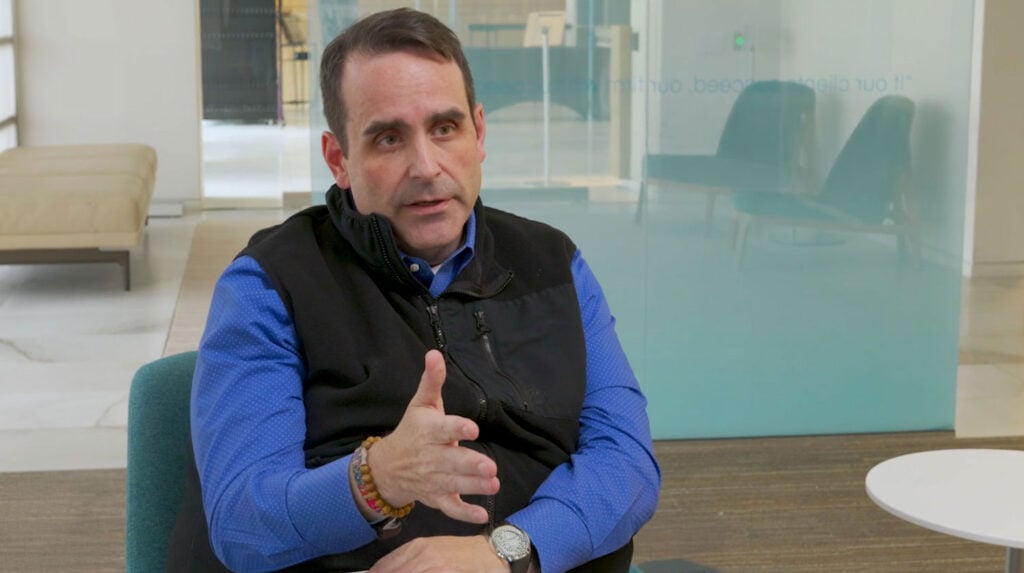
Watch a short clip from Fund for Shared Insight’s conversation with John Brothers.
Is there a common thread across those personal and professional experiences?
What doesn’t change from my perspective, no matter what’s happening in the world, is how you do work. If it’s done well, the work of nonprofits and philanthropy is always rooted in community, always led by community voices toward their own self-determination.
Baltimore has been your home for the past decade. How would you describe the city?
Baltimore is beautiful, gritty, and graceful all at the same time. That’s really hard to find, right? It’s not flashy. You’ve got to earn your trust here. Outsiders have a tough time here if they’re not committed to developing relationships. We have a lot of amazing people. We have more social entrepreneurs, and more artists per capita than anywhere else in the United States. We have amazing talent here.
“Smalltimore” is sometimes used to describe Baltimore, which implies that the city is a small place where everyone knows each other. And while Baltimore may be a small city compared to others, it’s not true that everyone knows everyone. Just three miles west of downtown is a community, Sandtown Winchester, where I started doing work when I got to Baltimore. Baltimore is just ten miles by ten miles. But if you’re in Sandtown Winchester, you might as well be on Pluto in the sense of not knowing some of the people in the city who want to be helpful.
Fagan Harris, a good friend who now works for Maryland Governor Wes Moore, describes Baltimore as the best place in the world to change the world. And that’s really true. But what matters to Baltimoreans is how you do that. Baltimore is a place to listen, and to be led.
What doesn't change from my perspective, no matter what's happening in the world, is how you do work. If it’s done well, the work of nonprofits and philanthropy is always rooted in community, always led by community voices toward their own self-determination.
How can funders start listening to be led?
Let’s say you’re a funder and you go to a community organization right now and you say, “Hey, I’m a foundation and I want to do a listening tour.” The minute you turn your back, that community organization is rolling their eyes because they know that your “listening tour” might just be about checking a box. But listening isn’t a one-time occurrence, it’s an ongoing muscle. And so let’s say you and I are in partnership and I, representing an industry, have never paid attention to you. Now all of a sudden, I say I’d like to listen. It’s not the one time that I listen to you that you’re actually going to trust me. It’s the 7th, 8th, 9th, 10th, 50th time that you’re going to trust me. Community folks need to see me and recognize me and then understand I’m here to listen, not do a bus tour or a one-time listening session.
How is shifting power to community a natural consequence of purposeful listening?
There’s a lot of people who are smarter than me doing work in the community. And the primary reason I got treated with deference and respect is the power dynamic — because of the position I was in, and the power that I had, with my team, to give away grants. I don’t view that as earned community power. Community power is the ability to galvanize your neighbors that you know by name around a cause that they believe in, which is what’s been happening in America forever. It’s the purest form of democracy, and it’s what makes our country great. That’s what we view as true, earned community power. We don’t have that kind of power automatically just because we represent philanthropy or a large company. Our job at that point is to try to diminish that dynamic, because you can’t solve community problems if that dynamic exists. We may want to solve a problem, but you know who wants to solve it more than us? Those community members, because it’s their community and the issue is affecting their neighbors that they know by name.
And so it is important for us to diminish that power dynamic. Let community lead because they should lead.
Any lessons learned about listening during your time in philanthropy?
When I arrived in Baltimore, we had a lot of people that wanted to meet me as a new leader in philanthropy. Early on, we would bring people into our headquarters building, which is beautiful. Except what we found is that when community members would walk into this building, it was like they were walking into church. They acted a certain way because of the environment and had less ability to just talk directly. And so that was a huge learning for us as part of our work towards changing the power dynamic. We need to go out into the community to have the right dialogue and build the trust that we seek.
A second example happened within the two first weeks that I was here. We had somebody come in to meet us who is an amazing leader in Baltimore — leads people, leads movements, is highly regarded, and community members love her. And immediately, as she comes into all the marble and wood and without even asking my name, she starts to lay out all these charts and graphs about how well they’re doing. “Look at our arrows going up. Look at our numbers. Aren’t we good now?” Why did she do that, without ever meeting me? Because she thought that’s what we cared most about. And my immediate thought was, shame on us for creating that environment.
That was such an important lesson that helped us in our evolution around evaluation and impact. Impact is such a jargony word. We say it all the time, and it’s a word that’s often owned by philanthropy and evaluators. But at the end of the day, the community should own those words — impact, evaluation, whatever you want to call it. But they don’t right now. So if you go to any organization that’s thinking about evaluation, they’re counting things ad nauseam for the industry of philanthropy. But they’re not learning for their own sake.
Then what’s the role of philanthropy?
Now, the best thing that I can do, and where I think philanthropy is the best, is we can see things from 10,000 feet up and we can say, hey, I have a partner over here that’s doing really cool stuff. You should talk to them. That ability is powerful. Philanthropy doesn’t do that enough. But our job is not to walk into your community and tell you what you should be measuring.
What does listening to shift power mean to you, and how can philanthropy get started?
This isn’t a new phenomenon. Community members have been saying that the power dynamic is wrong for a long, long time. And so if philanthropy wants to shift power, they first have to do that by understanding where they are and where they’ve been in the challenging power dynamic, because it is most likely they have had some kind of bad behavior.
You can’t shift power dynamics unless you’ve done your own work on where you have stepped wrong.
Once we do our own work, we can start to do this work better. It’s like anything else — if I want to be healthy, I just can’t want to be healthy. I can’t eat a banana on Monday and then eat McDonald’s every other day. I have to do my own work. I have to assess myself. I have to start doing that work. Then I can start to do other things externally as it relates to my health.
We’re talking about the wellness of the nonprofit sector, or the wellness of the relationship between philanthropy and community. And the only way that that starts is by philanthropy looking inward. And part of that is being good listeners.
Impact is such a jargony word. We say it all the time, and it’s a word that’s often owned by philanthropy and evaluators. But at the end of the day, the community should own those words — impact, evaluation, whatever you want to call it.
What would a healthier relationship look like among philanthropy, nonprofits, and community?
In terms of making civil society work, you obviously have folks on the ground, you have the organizations that represent them, and you have philanthropy or other sources of support that help fuel that.
The best analogy I have is that when I was in college, I played offensive line. I was a center. I wasn’t the quarterback of the team. My job was to block and tackle and help the team get to the right place. That is the role of philanthropy. Our job is not to be in front or to be on the poster or to be on television. That is reserved for our community members.
I truly believe that organizations, if they’re doing a really good job, are saying the words of their community members verbatim: my community says this. So when you say community and organizations, in my view if an organization is doing really well, there’s a really solid marriage of them.
I live in a community. My job in representing community for an issue I care about is to join community. But as a philanthropist, my job is to not be in front but to be behind, blocking and tackling on behalf of that partnership between organization and community. If I’m successful, you’ll never see me, you’ll see them. If I’m too much out in front, something’s broken. Community members and the organizations that represent them are the ones that should be out in front because they’re closest to the issues.
About Dr. John Brothers: For nearly a decade, Brothers served as president of the T. Rowe Price Foundation and T. Rowe Price Charitable, the philanthropic giving arms of the publicly-traded investment management firm based in Baltimore. He has been a leader in nonprofit capacity-building and the Trust-Based Philanthropy Project and is a frequent speaker and writer on nonprofit leadership. Insights for Change interviewed Brothers in late 2024, a few weeks before he announced he would be stepping down from his roles at T. Rowe Price in February 2025.

